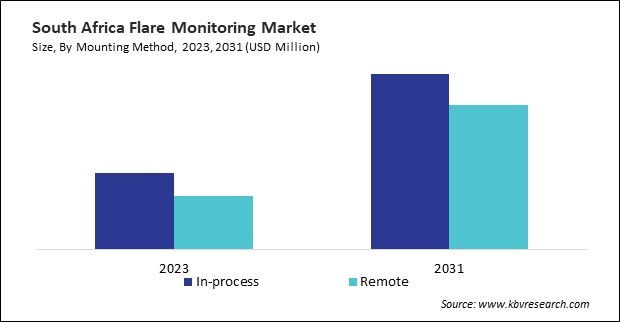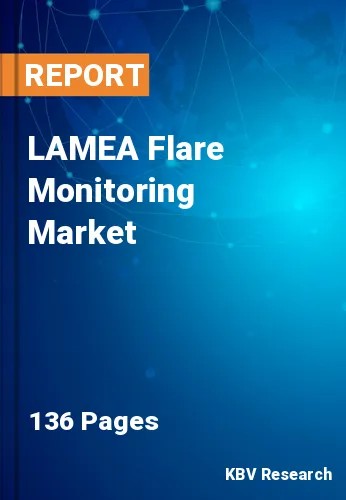The Latin America, Middle East and Africa Flare Monitoring Market would witness market growth of 10.3% CAGR during the forecast period (2024-2031).
The Saudi Arabia market dominated the LAMEA Flare Monitoring Market by Country in 2023, and would continue to be a dominant market till 2031; thereby, achieving a market value of $74.9 million by 2031. The Brazil market is showcasing a CAGR of 10.6% during (2024 - 2031). Additionally, The UAE market would register a CAGR of 9.9% during (2024 - 2031).

These systems give industries valuable insights into their flaring processes, enabling them to optimize operations, reduce unnecessary flaring, and lower emissions. These systems employ various technologies, including infrared cameras, mass spectrometry, thermal imaging, and optical gas imaging, to detect and quantify the composition of gases released during flaring. The real-time data these systems provide allows industries to monitor flaring events as they occur, enabling them to take corrective actions promptly.
Another factor driving the growth of this market is the increasing focus on sustainability and corporate social responsibility (CSR) among businesses. As climate change concerns persist, numerous organizations are striving to mitigate their environmental impact and diminish their carbon footprint through the implementation of sustainability initiatives. Methane is a major contributor to GHG emissions, particularly through flaring. An investment in eruption monitoring systems can enable companies to align their functions and operations with global sustainability objectives and exhibit their dedication to environmental stewardship.
Nigeria, one of Africa’s largest oil producers, has been grappling with the environmental impact of gas flaring from its onshore oil production sites. In response, the Nigerian government has introduced several initiatives to reduce flaring and encourage the adoption of these technologies. One initiative to abolish routine gas flaring by 2030 is the Nigerian Gas Flare Commercialization Program (NGFCP), which was initiated by the Ministry of Petroleum Resources. According to the data from the World Bank’s Global Gas Flaring Reduction Partnership (GGFR), Nigeria flared about 5.318 billion cubic meters (or 188 Bcf) of natural gas in 2022, making Nigeria the ninth-highest natural gas-flaring country in terms of annual natural gas-flaring volume. Therefore, as environmental regulations tighten and sustainability becomes a higher priority across industries, the flare monitoring market in the LAMEA region is expected to grow.
Free Valuable Insights: The Worldwide Flare Monitoring Market is Projected to reach USD 2 Billion by 2031, at a CAGR of 8.5%
Based on Mounting Method, the market is segmented into In-process (Gas Chromatographs, Mass Spectrometers, Flowmeters, Calorimeters, and Other In-process Type) and Remote (Thermal (IR) Imagers, Multi-Spectrum Infrared (MSIR) Imagers, and Other Remote Type). Based on Industry, the market is segmented into Refineries, Petrochemicals, Onshore Oil & Gas Production Sites, Landfills, and Other Industries. Based on countries, the market is segmented into Brazil, Argentina, UAE, Saudi Arabia, South Africa, Nigeria, and Rest of LAMEA.
By Mounting Method
By Industry
By Country
Our team of dedicated experts can provide you with attractive expansion opportunities for your business.

